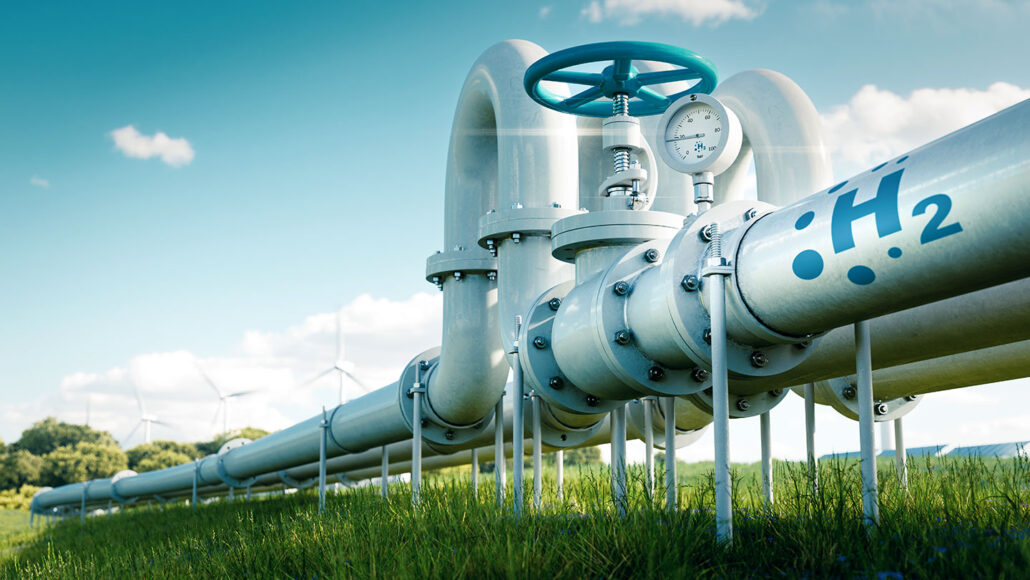Questions for ‘Hydrogen fuel could help our climate — depending on its source’

Above- or below-ground pipelines could carry hydrogen from where it’s produced to where it’s needed, either for energy or for other uses. Although a clean fuel, it’s highly combustible. So transportation safety will always remain an important issue.
Petmal/iStock/Getty Images Plus
Share this:
- Share via email (Opens in new window) Email
- Click to share on Facebook (Opens in new window) Facebook
- Click to share on X (Opens in new window) X
- Click to share on Pinterest (Opens in new window) Pinterest
- Click to share on Reddit (Opens in new window) Reddit
- Share to Google Classroom (Opens in new window) Google Classroom
- Click to print (Opens in new window) Print
To accompany ‘Hydrogen fuel could help our climate — depending on its source’
SCIENCE
Before Reading:
- List three types of chemicals we use as fuels. Which is most common in your daily life? Do you consider this fuel to be environmentally friendly? Explain why or why not.
- Where does the electricity powering our devices originate? How is most electricity in your area generated? What are some materials required for that process? List some required buildings or infrastructure needed for making and transporting electricity. Imagine that suddenly a superior energy source became available. However, to use it, we must build and buy all new devices capable of running on it. Also, we would need to build new infrastructure to generate and transport this energy. To what extent do you think this obstacle interfere with society transitioning to widespread use this new power source? Explain your answer.
During Reading:
- What is the byproduct of burning pure hydrogen?
- Describe the “chicken-and-egg” problem Mijndert van der Spek describes regarding the use of hydrogen fuel.
- Identify one obstacle that keeps suppliers from making lots of hydrogen fuel.
- Besides fuel, list three uses for hydrogen.
- Traci Forrester mentions a plant in Toledo, Ohio, that processes iron ore. What type of fuel does this plant currently burn? How might they start a shift to hydrogen (H2)?
- What happens to a hydrogen atom in the anode of a battery? What role does the catalyst play in this process?
- What are EVs? How might H2 fuel cells improve EV technology?
- Right now, what is the most common method for producing H2?
- What do engineers learn by doing a “life-cycle analysis” of a potential energy source?
- How does “yellow H2” differ from “gray H2“?
- H2 burns easily. As a fuel, that’s useful. But how might this pose a danger to people if not managed properly?
After Reading:
- Why is it essential to carry out a life-cycle analysis on a potential fuel? If we stopped doing this analysis, what mistakes might we make as a society? Be specific and describe one possible mistake. What might be the consequences of such an error?
- How can engineers turn “black” or “gray” H2 into “blue” H2? What do you think of this colorful system? To what extent does this system improve the appeal of learning about different types of fuel? In your opinion, how important is it for scientists to find appealing and engaging ways of communicating scientific findings with the public? Explain your answer.
- Think about the “chicken-and-egg” problem Mijndert van der Spek described regarding hydrogen fuel. What is another issue in our lives that is affected by a “chicken-and-egg” problem? Try to come up with an issue affecting your local area. (For example, consider things like transportation, health and wellness, or education.) Describe an ideal, futuristic scenario in which this problem is eliminated — or at least is mostly resolved. What gets in the way of achieving this ideal situation? Imagine we all decided to work together to achieve it. The transition would likely be rocky. What is an inconvenience, obstacle or cost that a regular person might have to endure in the short term?